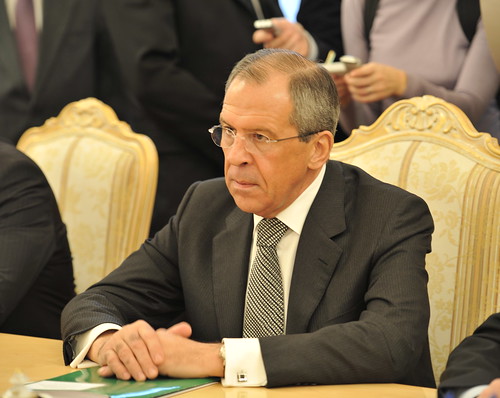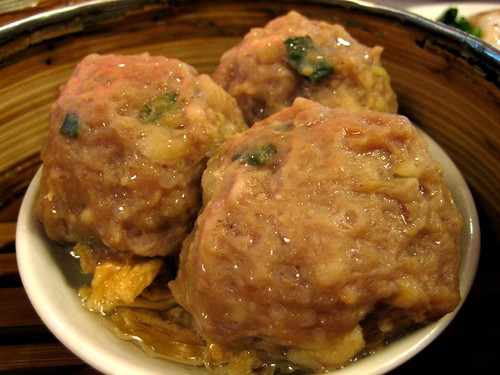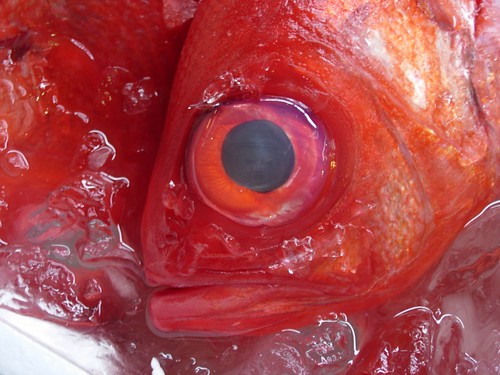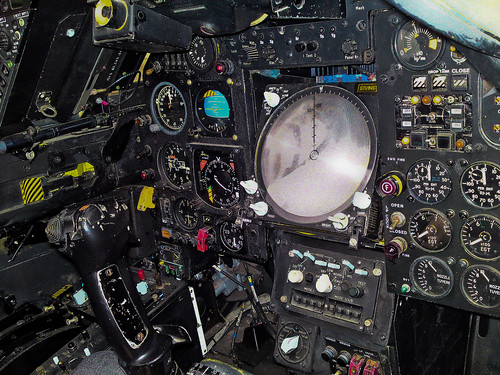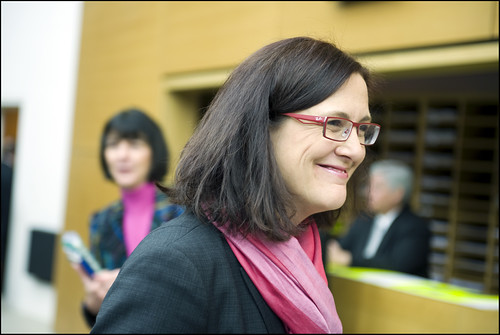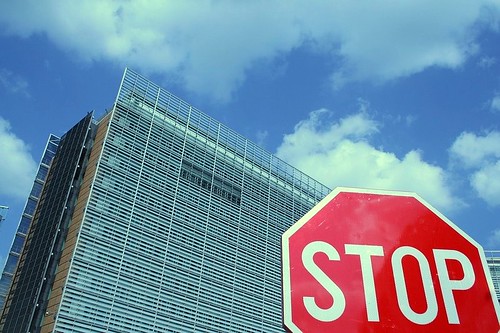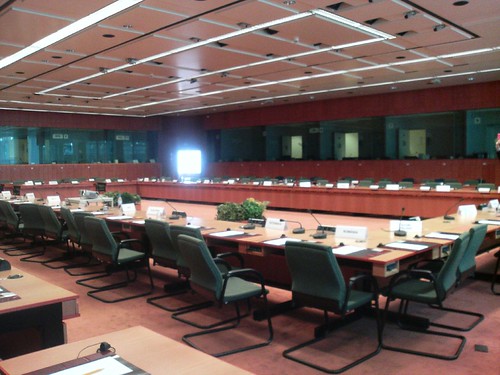Update: See the visualisation of this blog post that I have done as a follow-up.
This blog post is definitely among the most work-, research- and lern-intensive I have ever written, and I still feel I haven't done enough, even knowing that the article is way too long for a quick read.
It is inspired by the
re:publica 10 conference and the different workshops on data journalism, on data visualisation (see
my first experiments and
the map at the end of this post) and on farm & fish subsidies as well as the permanent discussions about making politics and government more transparent.
As you may have read in a
recent post on this blog,
the EU is about to reform its Common Fisheries Policy. This is absolutely necessary seeing the overfishing of our seas and the severe attacks on many marine species by the industrial fishery. Not to talk about
reports on illegal fishing by EU vessels.
Part of this larger reform process is the "
Council Regulation (EC) No 1224/2009 of 20 November 2009 establishing a Community control system for ensuring compliance with the rules of the common fisheries policy". This regulation
inter alia deals with supervision and sanctions regarding fish quotas and other rules set in the Common Fisheries Policy.
(
Update:) There is also a case in front of the European Court of Justice against the Council and this Regulation, as the the Council Legal Service
informed on Friday, a fact I wasn't aware of when writing this post.
The Regulation has been passed last November after one year of discussions, and since most documents have been made public afterwards it is worthwhile looking at the discussion process more in detail.
Those of you who work with EU institutions know how painful it is to track EU policy developments. And most of you will agree that it is particularly difficult to track what is going on in the EU Council; even ex post it is almost impossible to follow in detail what has been said and written behind the scenes.
The Council Regulation 1224/2009 is both, a good example of these difficulties and an exceptional case because of the amount of national positions that are publicly available. And since it is a Council Regulation I will also only focus on the decision-making process in the Council.
To start the research on the decision-making, we should begin with two possible sources of documentation and help, the
PreLex dossier of the regulation and the
Council website on the Council configuration for agriculture and fisheries. But if you follow the two links, you will first notice that the Council website is nothing but embarrassing and that PreLex only lists a very limited number of Council documents, despite the fact that the Council was the main institution in this process and despite the fact that there are many more documents as you can see below.
Since we don't get much help over there, we need to do in-depth research on our own. Most documents that you will find in this article have been found via the
advanced search in the online archive of the Council (see
recent statistics), the rest was found via Google or added from PreLex.
So let's tell some parts of the story of Council Regulation 1224/2009:
On 14 November 2008, the European Commission published the
Draft Council Regulation (81 pages plus explanatory memorandum) together with an extensive
Impact Assessment, which, as always, initiated the whole policy process.
In the Council, the
Working Party on Internal and External Fisheries Policy, a group of national experts from all member states, started working with this draft regulation
on 15 January 2009. In its meeting
on 22 January, the experts got a presentation of the legislative proposal by the Commission followed by a first exchange of view.
After the meeting on 12 March, several member states submitted their first comments and amendment proposals (chronological order):
Italy,
Bulgaria,
Poland,
Estonia,
Greece,
Sweden,
Spain,
Latvia,
Germany,
Portugal and
the Netherlands.
The Working Party meetings until mid-May did not have the Draft Regulation on their agenda, but several member states sent in their first, some already their second comments on the initial draft:
United Kingdom,
Poland (2nd),
Belgium,
Denmark,
France,
Spain (2nd),
Sweden (2nd),
Portugal (2nd), the
Netherlands (2nd),
Bulgaria (2nd).
Then, on 20 May 2009, a
commented draft proposal (doc. 10152/09; almost 150 pages) preceded by a summary of comments from the member states and the Commission was published. Interesting to note is that, on the same date, an
internal negotiation document (DS 329/09) that is not listed in the Council register was issued as a compromise basis for further negotiations during the Working Party meetings
on 28 May,
on 4 June, and
on 11 June. This compromise proposal was revised several times in the discussions (see below) and it contains intermediate consolidated versions of the draft regulation.
Following these meetings and based on
a number of questions asked by the Czech Council Presidency on 5 June, the national ministers meeting in the Council on 23 June 2009 held discussions on the draft regulation. Their answers to the questions raised by the Presidency are summarised in a
document published three days after the Council meeting.
Based on these contributions, the Council Secretariat prepared a new negotiation draft until 3 July; the text is laid down in the revised meeting document
DS 329/1/09 (see PDF from page 7; document not available on the Council website). This draft then was discussed in the following Working Party meetings
on 9 July,
on 15 July and
on 22 July.
These discussions were followed by new comments and drafting proposals by several delegations:
Bulgaria (3rd),
Belgium (3rd), the
Netherlands (3rd),
Slovenia (2nd),
United Kingdom (2nd),
Cyprus,
Denmark (4th),
Ireland (2nd),
Malta,
Finland (2nd),
Greece (2nd),
Italy,
Estonia (3rd),
Germany (3rd),
Latvia (3rd) and
France (2nd).
Probably based on these contributions, the Working Party discussed the
second revision of meeting document DS 329 (not available on the net)
on 10 September . The Working party meeting
on 14 September continued this work.
For the Working Party meeting
on 18 September, the
fourth revised version of the meeting document
DS 329/4/09 (Word format!) was issued on 16 September. Also on 18 September, the date of the Working Party,
Portugal issued their third written comments, followed by
France, the last written comment by the member states in the preparatory phase.
On 25 September, a new
draft proposal (13597/09 ADD 1) was published. According to the Council Secretariat it contained only minor changes compared to the fourth version of the negotiation document DS 329 (see above).
This proposal was then examined by the Working Party
on 1 October, followed by a
report for
COREPER on 2 October. The report summarises the different positions of the member states at this point of the negotiations and requests COREPER to deal with these diverging opinions.
After its meeting
on 7 October, COREPER sent
another report to the upcoming EU Council
on 19 October, reporting to the ministers which issues had not been sorted out by the diplomats and which needed political agreement on the highest level (quite a lot actually when you look into the document).
According to a
note issued by the Council Secretariat on
5 November, the October Council then came to a political agreement, which subsequently led to a
final compromise proposal (DS 641/09, not in Council register) put forward by the Swedish Presidency in agreement with the Commission
on 23 October. This proposal was sent to the next Council meeting for final approval.
Of the 27 member states,
only Finland abstained, the rest voted in favour. The
summary of Council acts (pp. 20-23) includes special statements by the Commission, Finland, Italy and Slovenia. The Finnish statement makes clear that its abstention could also be understood as a "No".
This is the whole documentation of the process as far as I could track it within the Council.
You may have noticed that I didn't talk about any content, but going through the amount of documents would take days, and I am also no expert on fisheries.
It could still be worthwhile comparing the different draft versions of the regulation and the positions of individual member states. Or one could compare the drafts and the national positions with the positions of national and European lobby organisations. Maybe there is some open source software that could help doing this. Or some scientist with the time and budget to do so.
What we lack are meeting reports from the Working Party and Council meetings, which one probably could get from the Council Secretariat or from the national ministries in charge of fisheries. This would demand further journalistic investigation. These documents would help to get a more detailed view into the real discussion process.
Altogether, one can see the absolute complexity of EU negotiations and EU law-making. The regulation was passed last year and at the time only few actors were actually likely to be able to track the decision-making process while it was going on. Still, it is on us to retrace those processes and make them accessible to the public if the Council is not willing to become more transparent in its day-to-day work.
But even if we would have "
A Leaking Union" there would be the need to follow closely every document that is coming out and policy experts would need to analyse new drafts and changes regarding their technical meaning and their influence on the policy process. Data blogging and data journalism and meticulous research cannot be replaced even if everything is public.
Somebody needs to find the right documents and somebody needs to filter the relevant from the irrelevant. Believing that this could be done in its entirety by voluntary work is an illusion.
In the end, this post has become way too long and has cost way too much time, but I hope I was able to show the length and depth of decision-making in the Council on this particular issue. What I would have liked to have was a simple tool to put all the links I have assembled above in a simple timeline so that it would be easier to track the process visually and to click at any point in time to see what was on the agenda - but that will be a task for the future.
On the map below you find a marker for every EU member state. When you click on the marker you will get a link to the fish subsidies the country has received in the past and the comments and amendments tabled in the decision-making process on Council Regulation 1224/2009 described above.
